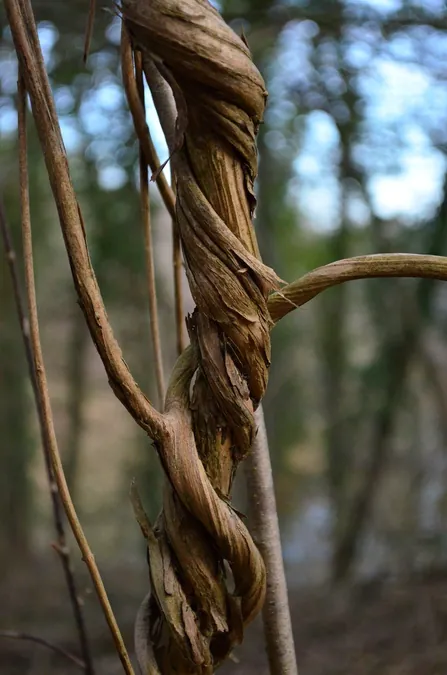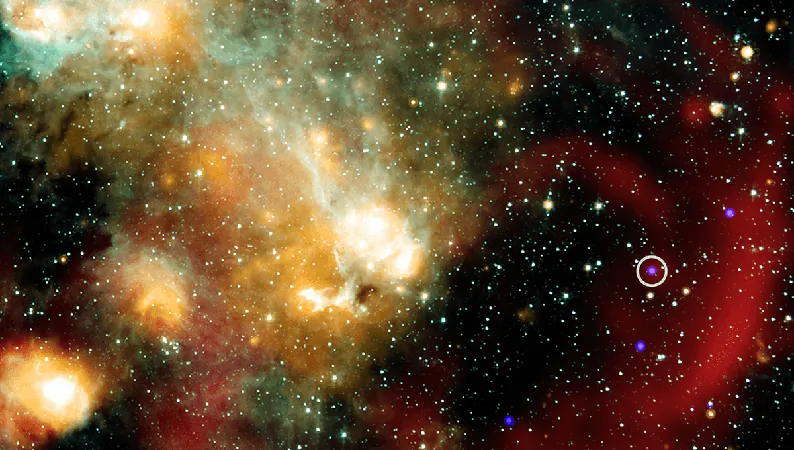
Lianas are Conquering Rainforests—and You Can See It from Space!
2025-05-06
Author: Li
The Liana Invasion: A Growing Threat to Tropical Forests
A wave of lianas is sweeping through tropical rainforests, threatening to undermine their vital role in sequestering carbon and preserving biodiversity. Recent studies from Leiden University have shed light on this alarming phenomenon, revealing that the spread of these woody vines is visible from space!
Tropical Forests: The Earth's Lungs Under Siege
Tropical forests play a critical role in our ecosystem, absorbing roughly the same amount of CO₂ emitted by Europe each year while housing around half of the planet's biodiversity. Unfortunately, their ability to regulate our climate is under serious threat—not just from deforestation but also from a rapid increase in liana populations, as highlighted by ecologist Marco Visser of Leiden’s Center for Environmental Sciences.
"Lianas can overwhelm and even kill trees," warns Visser. "When they take over, the forest not only becomes choked with vines but also halts its regeneration, leading to a catastrophic drop in carbon storage, sometimes by as much as 95%. This situation is almost as detrimental as outright deforestation."
A Pandemic of Lianas for Over 30 Years
This liana crisis has been brewing for over three decades. During his doctoral research in 2016, Visser pioneered the idea of modeling lianas as if they were infectious diseases. These invasive vines, including species like passionflowers, act like parasites, intercepting vital resources and more than doubling tree mortality rates!
New research, led by Ph.D. candidate Manuela Rueda-Trujillo, reveals this trend is not limited to South and Latin America but is global, with liana prevalence increasing by 10% to 24% every decade.
A Climate-Driven Explosion
So, what's causing this liana invasion? Rising atmospheric CO₂ levels are giving these vines a distinct advantage. "While all plants benefit from increased CO₂, lianas outpace their tree competitors because they conserve energy. They use trees for support while requiring fewer nutrients to produce their leaves," says Visser. This allows them to rapidly climb to the canopy, monopolizing sunlight and leaving little for other plants.
Lianas: Visible from Space!
In an exciting development, Visser and his collaborators have confirmed that lianas are indeed visible from space! By employing advanced mathematical models and direct measurements from treetops in Panama, they found that lianas reflect more light and infrared radiation than traditional tree foliage.
"Lianas are true egoists," Visser explains. Their flat leaves block sunlight from reaching lower layers of the forest, which can have dire consequences for the entire ecosystem. Understanding their visibility from space provides a powerful tool to map their spread and impact worldwide.
What Does This Mean for Our Planet?
With the ability to monitor liana growth from satellite imagery, researchers can better understand this phenomenon's global implications. The spread of lianas threatens not only the forests' biodiversity but also the critical carbon storage that helps mitigate climate change. Immediate attention is needed to combat this liana pandemic and protect our invaluable tropical forests.



 Brasil (PT)
Brasil (PT)
 Canada (EN)
Canada (EN)
 Chile (ES)
Chile (ES)
 Česko (CS)
Česko (CS)
 대한민국 (KO)
대한민국 (KO)
 España (ES)
España (ES)
 France (FR)
France (FR)
 Hong Kong (EN)
Hong Kong (EN)
 Italia (IT)
Italia (IT)
 日本 (JA)
日本 (JA)
 Magyarország (HU)
Magyarország (HU)
 Norge (NO)
Norge (NO)
 Polska (PL)
Polska (PL)
 Schweiz (DE)
Schweiz (DE)
 Singapore (EN)
Singapore (EN)
 Sverige (SV)
Sverige (SV)
 Suomi (FI)
Suomi (FI)
 Türkiye (TR)
Türkiye (TR)
 الإمارات العربية المتحدة (AR)
الإمارات العربية المتحدة (AR)